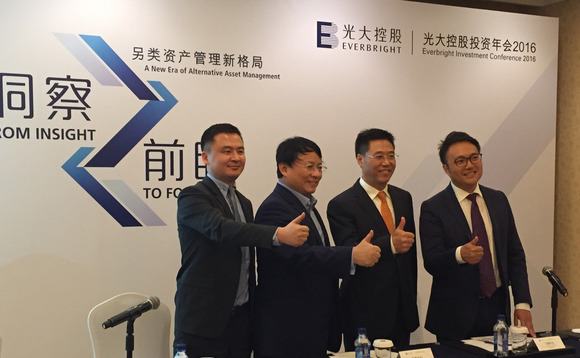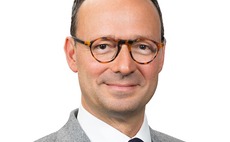
China fundraising: Joining forces

The Everbright-IDG Industrial Fund is one example of investors joining forces to address the investment opportunities created by China's evolving economy. Are two heads really better than one?
China Everbright (CEL) and IDG Capital Partners initiated their co-GP partnership fund in May. Within a month, the renminbi-denominated Everbright-IDG Industrial Fund achieved a first close of RMB10 billion ($1.48 billion). Less than five months after that, all capital raised has now been fully deployed.
"We usually spend 2-3 months to close a $500 million fund on our own, which is not bad. But raising RMB10 billion in one month - I just can't do it yet," said Hugo Shong, founding general partner of IDG, on the sidelines of the CEL Investor Conference. "Fundraising is CEL's strength since it has a large pool of institutional LPs at its disposal. Through the partnership, we don't have to spend hours talking to every Chinese LP and can concentrate on deal sourcing."
Hong Kong-listed CEL sourced much of the capital from sister divisions within state-owned China Everbright Group. The fund, which is expected to reach a final close of RMB25-30 billion in the first half of next year, looks at M&A and restructuring opportunities across financial technology, entertainment, mobile e-commerce, as well as LEDs and semiconductors - areas that CEL is less familiar with.
With IDG as a partner, we can share opinions and I feel more comfortable to do such deals together - Shuang Chen
"It's a pity that I missed a lot of great fintech opportunities, such as Ant Financial," said Shuang Chen, CEL's CEO. "I came from an investment banking background, and I wasn't sure internet technology could disrupt traditional financial services. Even though I had the chance to invest in Ant Financial early on, I didn't know how to seize the opportunity. With IDG as a partner, we can share opinions and I feel more comfortable to do such deals together."
In addition to IDG, CEL is in negotiation process with Sequoia Capital to set up an array of co-managed M&A industry-focused funds with a view to diversifying its deal-sourcing channels. But for CEL and others, are these funds a one-time event or a sustainable business model?
Management issues
Over the past decade, CEL has transformed itself from a brokerage into a multi-platform asset manager; as of June, it managed more than 33 private equity, venture capital and sector-focused funds. They include one cross-border vehicle raised in conjunction with Israel-based Catalyst Private Equity in 2013.
However, CEL's first foray into the co-GP space did not work out as planned. In 2010, it launched a joint vehicle with Macquarie Group targeting infrastructure projects in Greater China. Several international groups committed capital, but the fund was subsequently restructured under Macquarie's sole management, with CEL switching to LP status. According to a source close to the situation, fundraising floundered due to high fees and the dual management team's inability to move quickly on deals.
CEL isn't alone in launching co-managed funds with foreign GPs. In 2010, local conglomerate Fosun Group established a $100 million vehicle with The Carlyle Group, with each party committing $50 million. It is also considered a failure. "The two parties had almost had no cooperation; each team ended up managing its own money," says one industry participant. "It was unsuccessful because Fosun and Carlyle had no common interest."
CEL and IDG are confident their venture will not go the same way, citing a well-established relationship between the two sides. Two existing IDG portfolio companies, US-based mobile payments technology provider Circle and Chinese LED supplier Wuhan HC SemiTek have already received follow-on funding from the Everbright-IDG Industrial Fund.
"IDG is very sensitive to new economy opportunities, while CEL is good at managing investment risk," said James Pan, a member of the management committee in CEL. "The two firms are working closely, which doesn't come naturally. It takes a long time to get used to one another."
CEL's multi-platform investment strategy has also attracted interest from the National Council for Social Security Fund (NSSF). According to Pan, NSSF and CEL are nearing an agreement that would see NSSF allocate "tens of billions of renminbi" to CEL through a separately managed account. This would be channeled into 10-13 funds on the CEL platform, including the Everbright-IDG Industrial Fund.
In addition, the firm is bringing in more third-party domestic investors through its fund-of-funds products. Earlier this year, CEL launched a renminbi fund-of-funds with initial capital of RMB5 billion and a full target of RMB10 billion. It has already made commitments to Sequoia Capital's latest China fund and CITIC Capital's new Japan-focused vehicle.
"A state-owned enterprise background means we aren't allowed to make many mistakes. Through the fund-of-funds structure, we can get exposure to other GPs' investment activities, in areas that we aren't so familiar with, and learn," CEL's Chen said.
The firm's LP base for all its products used to be dominated by overseas institutional investors, with domestic LPs accounting for approximately 30% of the total. Now, though, with appetite for investment in China weakening due to the overall economic slowdown and Chinese investors increasingly interested in going overseas, the local share is up to 70%.
Don't miss out
FountainVest Partners has also entered the co-management space and Frank Tang, the firm's CEO, offered some insights as to why. The slowdown in the Chinese economy is not uniform, with some areas - such as the internet and financial technology - still growing at speed while traditional industrial sectors are moribund. GPs need partners to help them navigate this more complex commercial environment.
FountainVest and CEL both participated in the privatization of Focus Media, a US-listed Chinese outdoor advertising business, in 2012 and helped re-list the company towards the end of last year. The two groups have since embarked on separate industry-focused funds with Focus Media, targeting entertainment, consumer upgrades and internet finance.
"There is no secret when it comes to the key investment areas in China, such as healthcare, consumer upgrades and advanced manufacturing," Tang added. "These are megatrends. If you don't ride with the trend, you won't be able to seize these opportunities."
Latest News
Asian GPs slow implementation of ESG policies - survey
Asia-based private equity firms are assigning more dedicated resources to environment, social, and governance (ESG) programmes, but policy changes have slowed in the past 12 months, in part due to concerns raised internally and by LPs, according to a...
Singapore fintech start-up LXA gets $10m seed round
New Enterprise Associates (NEA) has led a USD 10m seed round for Singapore’s LXA, a financial technology start-up launched by a former Asia senior executive at The Blackstone Group.
India's InCred announces $60m round, claims unicorn status
Indian non-bank lender InCred Financial Services said it has received INR 5bn (USD 60m) at a valuation of at least USD 1bn from unnamed investors including “a global private equity fund.”
Insight leads $50m round for Australia's Roller
Insight Partners has led a USD 50m round for Australia’s Roller, a venue management software provider specializing in family fun parks.








